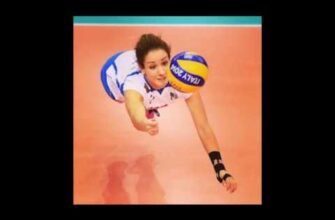In a significant departure from tradition, the International Chess Federation (FIDE) has announced a revised dress code for its premier tournaments, including the FIDE Grand Swiss. The headline news? Appropriate jeans and sneakers are now officially sanctioned, marking a pivotal moment in the sport`s ongoing journey to balance its storied past with a forward-looking future.
The Subtle Revolution on the 64 Squares
For decades, the image of a professional chess player has often been synonymous with quiet formality: sharp suits, crisp shirts, and polished dress shoes. This sartorial standard, while lending an air of intellectual gravitas, has occasionally been viewed as a relic, potentially alienating a younger generation and, perhaps more practically, causing discomfort during grueling, multi-hour matches.
FIDE’s latest directive aims to address these concerns head-on. The updated guidelines for events like the FIDE Grand Swiss and FIDE Women’s Grand Swiss now explicitly permit what they term “classic, non-distressed jeans” in specific shades (blue, black, and grey) and “unicoloured sneakers.” This isn`t a free-for-all, mind you; ripped denim and neon-flashing footwear are still firmly off the board. It`s a calculated, almost surgical, insertion of casual comfort into the hallowed halls of high-stakes chess.
Beyond Aesthetics: The Pragmatic Pursuit of Performance
One might wonder if the color of a player`s sneakers genuinely impacts their strategic prowess. The answer, subtly, is yes. Comfort, or a lack thereof, can be a silent adversary. Hours spent hunched over a chessboard, under the glare of spotlights and the pressure of the clock, can be physically taxing. A restrictive suit or uncomfortable shoes can detract, however minimally, from a player`s focus and endurance.
By allowing more relaxed, yet still presentable, attire, FIDE is perhaps acknowledging that peak mental performance is not solely a product of intellect, but also of a conducive physical state. A grandmaster who isn`t distracted by an ill-fitting collar or pinching shoes might just find that extra sliver of concentration needed to spot a winning combination. It’s less about fashion, more about marginal gains in an increasingly competitive environment.
A Balancing Act: Tradition vs. Transformation
FIDE President Arkady Dvorkovich articulated this change as a commitment to “both tradition and progress.” This statement encapsulates the delicate tightrope walk the federation is attempting. On one hand, chess is a game steeped in history, nobility, and intellectual rigor. The formal attire often reflected this gravitas. On the other hand, for a sport to thrive and attract new talent, it must evolve, shake off perceived stuffiness, and embrace modernity without losing its essence.
“With this update, FIDE reaffirms its commitment to both tradition and progress — creating an environment where players feel comfortable and confident, while the game continues to shine on the world stage.” — Arkady Dvorkovich, FIDE President
The new code appears to be an elegant compromise. It acknowledges contemporary trends in professional wear – where “business casual” often includes dark jeans – while maintaining a clear barrier against anything overtly informal or distracting. The emphasis on “classic” and “non-distressed” jeans, along with “unicoloured” sneakers, ensures that a sense of decorum prevails. One can almost picture the spirited debates within FIDE committees: “But what shade of grey is too casual for the Grand Swiss?”
The Future of Chess Aesthetics
This update is more than just a footnote in a rulebook; it`s a symbolic gesture. It signals FIDE`s desire to make chess more approachable, more relatable, and perhaps even cooler to a broader audience. As the game increasingly moves into online spaces and attracts younger streamers and content creators, aligning the physical tournament experience with a more contemporary aesthetic could prove beneficial.
Will we soon see custom-designed chess sneakers or grandmasters sporting designer denim? Perhaps. For now, FIDE has opened the door to a more comfortable, yet still undeniably distinguished, era of competitive chess. The game, after all, is played on the board, not on the runway. But a confident, comfortable player might just play it better.







